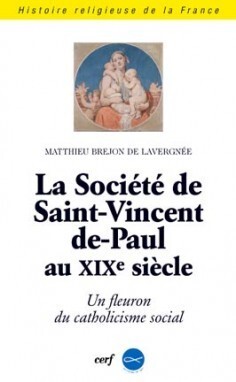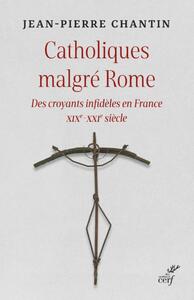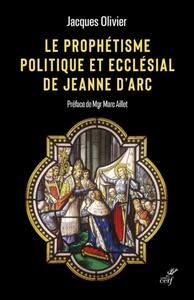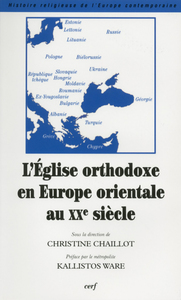Nous utilisons des cookies pour améliorer votre expérience. Pour nous conformer à la nouvelle directive sur la vie privée, nous devons demander votre consentement à l’utilisation de ces cookies. En savoir plus.
LA SOCIÉTÉ SAINT-VINCENT-DE-PAUL AU XIXE SIÈCLE
Cerf - EAN : 9782204086097
Édition papier
EAN : 9782204086097
Paru le : 11 déc. 2008
15,00 €
14,22 €
Epuisé
Pour connaître votre prix et commander, identifiez-vous
Manquant sans date
Notre engagement qualité
-
 Livraison gratuite
Livraison gratuite
en France sans minimum
de commande -
 Manquants maintenus
Manquants maintenus
en commande
automatiquement -
 Un interlocuteur
Un interlocuteur
unique pour toutes
vos commandes -
 Toutes les licences
Toutes les licences
numériques du marché
au tarif éditeur -
 Assistance téléphonique
Assistance téléphonique
personalisée sur le
numérique -
 Service client
Service client
Du Lundi au vendredi
de 9h à 18h
- EAN13 : 9782204086097
- Réf. éditeur : 775126
- Collection : HISTOIRE RELIGI
- Editeur : Cerf
- Date Parution : 11 déc. 2008
- Disponibilite : Manque sans date
- Barème de remise : NS
- Format : H:235 mm L:145 mm E:36 mm
- Poids : 1.014kg
- Interdit de retour : Retour interdit
-
Résumé :
On connaît Frédéric Ozanam depuis sa béatification par Jean-Paul II en 1997 et les nombreux ouvrages qui lui ont été consacrés. Mais que sait-on vraiment de l'oeuvre qu'il a contribué à fonder ? La petite conférence de charité réunit en 1833 une poignée d'étudiants du Quartier latin, catholiques et romantiques, pour se soutenir dans la prière et visiter les pauvres à domicile. À la veille de la Commune (1871), la Société de Saint-Vincent-de-Paul était devenue l'une des principales oeuvres du monde catholique. Elle compte aujourd'hui 700 000 membres dans près de 150 pays. Cet ouvrage éclaire les raisons de ce succès et entraîne le lecteur sur les voies d'une histoire sociale du religieux. Il met en lumière, par une rigoureuse prosopographie, les parcours types de plusieurs centaines de catholiques sociaux. Entre le dévot du Grand Siècle et le bénévole associatif contemporain, il y eut un temps pour l'homme d'oeuvres, modèle d'engagement que la figure postérieure du militant a injustement conduit à déconsidérer. L'auteur trace ainsi les contours de la « voie vincentienne », mystique active qui trouve le Christ dans la rencontre avec les pauvres et façonne l'exercice d'un audacieux apostolat des laïcs. Il expose le tableau des oeuvres charitables, en particulier à Paris où taudis et indigents abondent, et leur évolution sous l'effet de l'hausmannisation de la capitale sous le Second Empire. Une interprétation anthropologique du « don charitable » peut enfin être tentée. Il est une question, lancinante, qui traverse le livre : la charité n'est-elle pas un moyen de refonder le lien social ? Figure de l'antimodernité, elle est peut-être plus politique qu'il n'y paraît. Le débat n'est pas clos.
--
We have known Frédéric Ozanam since his beatification by John-Paul II in 1997, and through the numerous works devoted to him. But what do we really know about the charity he helped to found? The little charity conference in 1833 brought together a handful of students from the Latin Quarter, Catholics and Romantics, to pray together and to visit the poor in their homes. On the eve of the Commune (1871), the Saint-Vincent-de-Paul Society had become one of the principal charities in the Catholic world. Nowadays, it numbers more than 700,000 members in almost 150 countries. This book reveals the reasons for this success and conducts the reader on the path of a social and religious history. By means of a rigorous prosopography, it brings to light the typical trajectory of several hundred socially-minded Catholics. Between the deeply religious person of the grand siècle and the voluntary community helper of today, there was a time for the man of charitable works, a model of commitment who has been unjustly discredited when compared to the more recent figure of the militant. In this way, the author delineates the ‘Vincentian path', an active mysticism that finds Christ through encountering the poor and shapes the practice of an audacious lay ministry. He sets out the register of charitable works, particularly in Paris where the destitute and their hovels abound, and their evolution under the effect of the Hausmannization of the capital under the Second Empire. He concludes with an anthropological interpretation of the ‘charitable donation'. There is one insistent question that traverses the book: isn't charity a means of forging social links? A symbol of anti-modernity, it is perhaps more political than it seems at first view. A topic to be debated in years to come.













![LA TAPISSERIE HIER ET AUJOURD'HUI - ACTES DU COLLOQUE... 18 ET 19 JUIN 2007, [PARIS]](https://images.centprod.com/3025594997205/NBllzQtV_fqthquwGXflSWLnW3IpQwIvOs6zKEWrOgXwyTZE20O8CA-cover-medium.jpg)